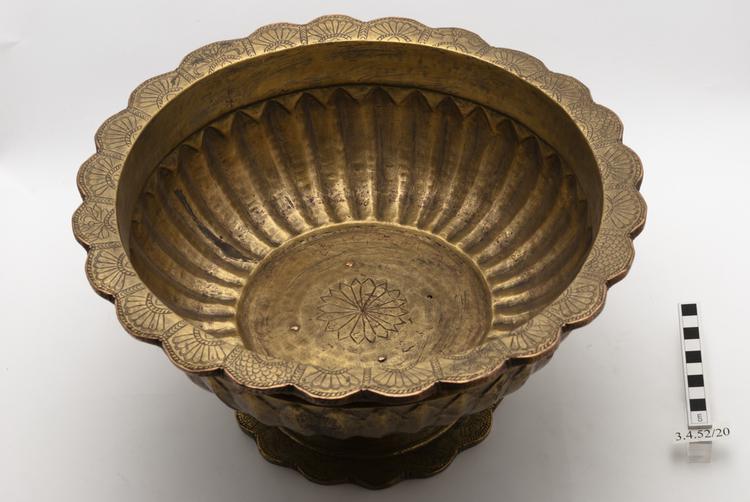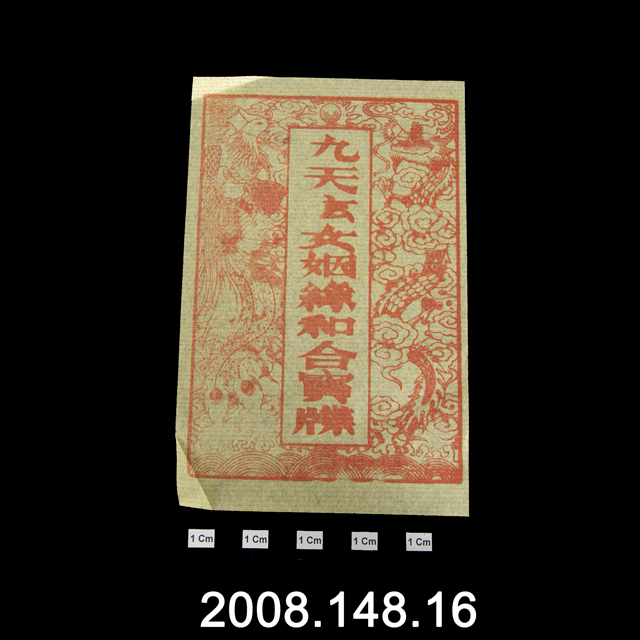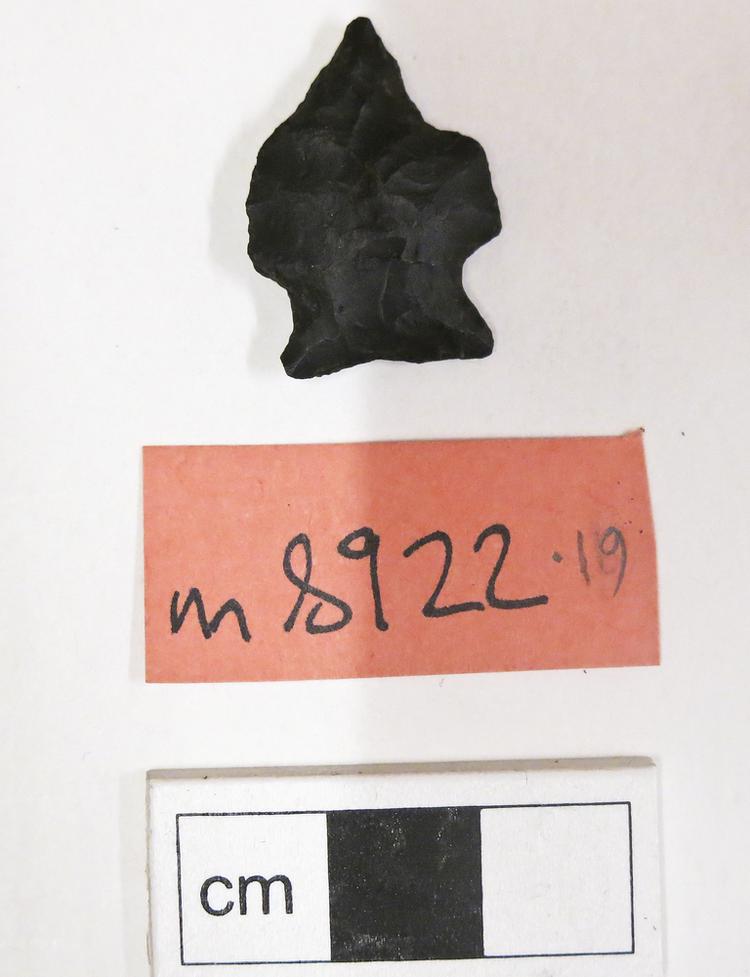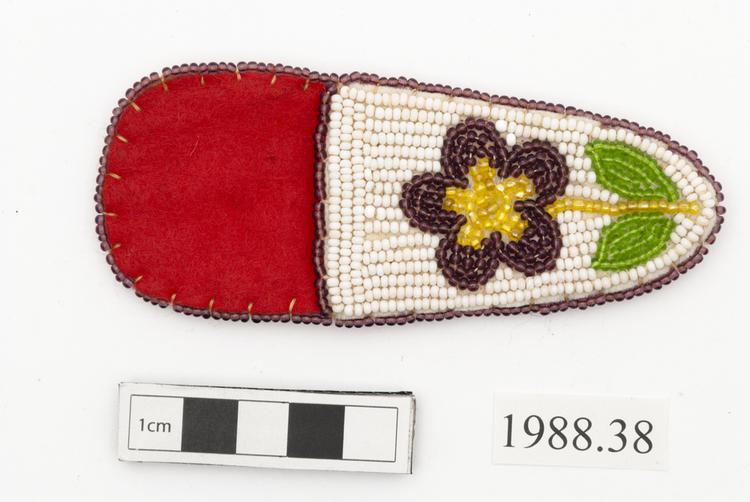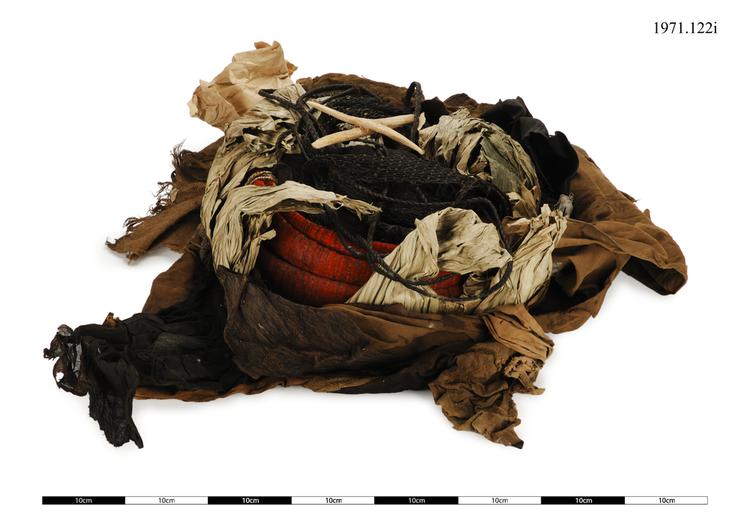
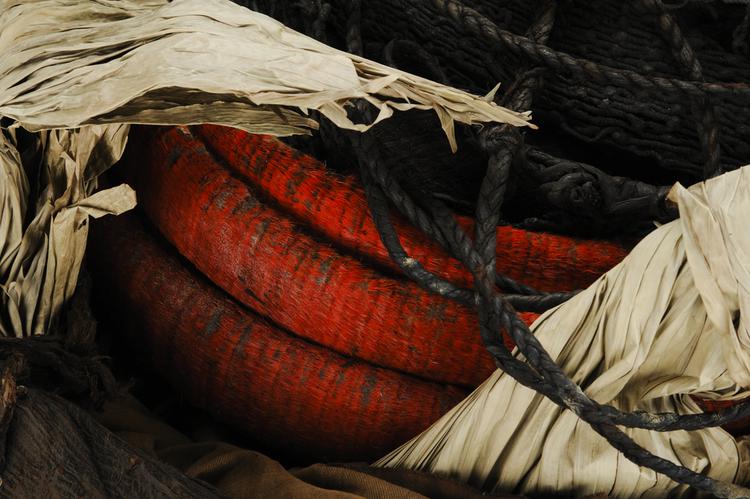
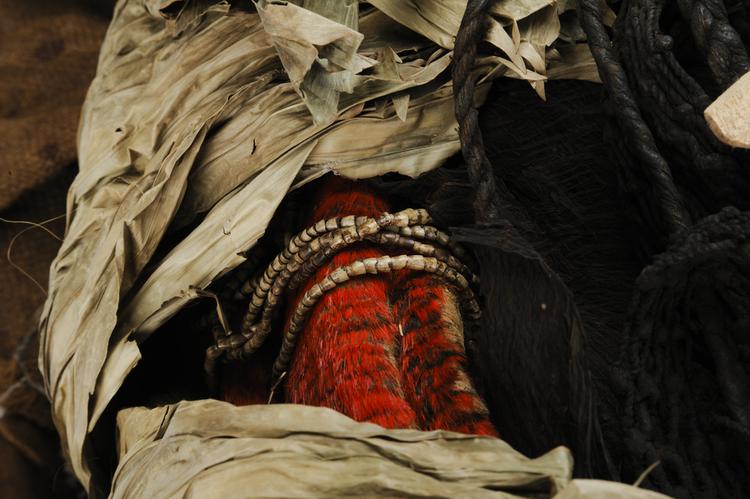
Santa Cruz feather money in a double coil with its original wrapping. The strips of feather money are woven in to a coil of coconut fibre cordage, into which are tied red feathers of the honey creeper. The end of each strip is tied off with a tab possibly made of shark's skin, and danglers of half coix shells. Both coils are woven in five turns around a central spool of bark. At one point on the outside of the coil a pair of white gastropod shells are attached, and here as well as at the end of the danglers, small shaped tabs of coins on cloth are tied in. The whole is wrapped in four layers. The first layer is comprised of palm leaves, the second of brown trade calico, and the third is a smoked course bark cloth. The last layer is a piece of hessian sacking. The whole has been tied together with a chocolate brown coconut fibre cord with a double twist.
Roll of Feather Money, Tevau, Santa Cruz Group, Solomon Islands This remarkable object is one of many distinctive forms of currency constructed and used in various parts of the Solomon Islands. Wound in five turns and two layers around a large reel of bark and mounted on a complex rope-like construction, thousands of small red feathers from the Scarlet Honeyeater (Myzomela cardinalis) are here accumulated in one relatively portable form. At one point on the outside of the coil, coins and a pair of white sea-snail shells are attached. Representing many hundreds of hours work in trapping and accumulation, like all Solomon Islands currency forms, the value of the tevau emanates from the rarity of its materials and the difficulty of its construction. Although such objects are not uncommon in museum collections of Pacific art, this particular example is distinctive in retaining its original wrapping of four layers, which is usually removed by museum curators to show off the red feathers. The first layer is made from palm leaves, the second of brown trade calico, the third is a smoked coarse bark cloth, and the last layer is a piece of bath-towel. The whole has been tied together with a coconut fibre cord to secure it for presentation, and has a carrying handle. Feather, vegetable fibre, calico, sacking, bark, barkcloth, leaves, wood. Mid-20th Century. Purchased for the Horniman Museum by Mrs Helen Forster.



